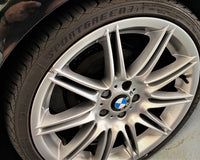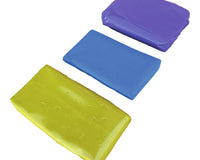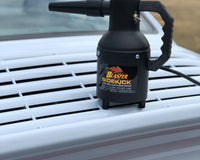Selling a car isn’t just about advertising and paperwork; it’s also about presentation. A well-detailed car creates a positive first impression and can significantly increase your vehicle's resale value. Whether you’re trading it in, selling it privately, or putting it up for auction, detailing your car properly is an essential step in the selling process. Car buyers often make emotional decisions based on how clean, well-maintained, and polished a vehicle appears. Detailing shows that you’ve taken care of your car over time, and this visual confirmation builds trust. In this guide, we’ll cover how to detail your car before selling it and why it can make all the difference when aiming for top value.
Why Detailing Matters When Selling a Car
The overall condition of your car influences its perceived value. When a potential buyer inspects your car, every minor scratch, stain, or odour can give them a reason to negotiate down or walk away altogether. A professionally detailed car often appears newer, more reliable, and more desirable. Even if your car has some mechanical wear, its clean appearance can soften a buyer’s concerns. Detailing also highlights the strengths of your car, such as the quality of the paintwork, the cleanliness of the interior, and the clarity of the glass and headlights. It shows that you’ve invested time and care into maintaining the vehicle, and this directly correlates with buyer confidence.
Another reason detailing is important is that first impressions are formed quickly. If your car looks and smells fresh from the outset, it creates a psychological effect that increases the perceived value. A clean engine bay, for example, gives the impression that the car is mechanically sound, even if that isn’t strictly verified at that stage. Similarly, an interior free from pet hair, food stains, and clutter feels like a car that hasn’t been abused. Buyers are more likely to pay a higher price when they feel they’re getting a clean, well-kept vehicle. Simply put, detailing is your car’s silent salesperson, helping you fetch maximum value without saying a word.
Exterior Detailing to Restore Shine and Appeal
The exterior of your car is what captures a buyer’s attention first. Begin by thoroughly washing the car, paying special attention to areas that accumulate the most grime, such as the lower panels, wheel arches, and around the badges. Use a two-bucket method to prevent swirl marks and ensure you’re using a high-quality car shampoo. After the wash, drying the car with a clean, plush microfibre towel is essential to avoid water spots and streaks. Once dry, you should inspect the paintwork under good lighting to identify any defects, such as oxidation, scratches, or dullness.
Paint correction may be necessary if the surface shows visible swirls or fading. A light polish using a dual-action polisher can enhance the gloss and restore vibrancy, giving the paintwork a deep, attractive finish. If you don’t have access to a polisher, a hand-applied polish can still yield decent results with some effort. Waxing or sealing the paint is a crucial final step, as it locks in the shine and adds a protective barrier. This glossy appearance not only enhances the visual appeal but also photographs better if you’re listing the car online.
Don't forget the finishing touches—clean the wheels thoroughly, restore tyre shine with a dressing, and use a trim restorer on faded plastics. Cleaning the windows inside and out ensures they’re streak-free and crystal clear. Removing any tar spots, bird droppings, or tree sap from the surface shows attention to detail. Even the fuel filler area should be wiped clean. These small exterior elements contribute collectively to a premium look, which can positively influence a buyer’s perception and offer.
Interior Cleaning for Comfort and Freshness
The interior is where potential buyers will spend their time, and it’s one of the most influential parts of their purchasing decision. Start by removing all personal belongings and clutter. A neutral, depersonalised interior allows buyers to imagine themselves in the vehicle without distractions. Vacuum all seats, floors, mats, and upholstery thoroughly. Pay extra attention to areas between seat cushions and under the seats where crumbs, hair, and dirt often hide. Use a crevice tool for hard-to-reach spots.

Next, clean and condition surfaces based on the materials. For fabric seats, a fabric cleaner or steam cleaner works well to lift stains and restore freshness. For leather, use a leather cleaner followed by a conditioner to keep the leather soft, supple, and free from cracking. For plastic or vinyl dashboards and panels, a gentle all-purpose cleaner followed by a UV protectant keeps them clean and prevents fading or discolouration from sunlight exposure. Steering wheels, gear knobs, and door handles should also be sanitised as they are high-contact areas.
An often-overlooked element is odour. A car that smells fresh is much more inviting to potential buyers. If your car has lingering smells—whether from pets, food, or smoke—use an odour neutraliser rather than a scented air freshener. The goal is to remove odours completely, not mask them. Cleaning the air vents, replacing the cabin air filter, and using an ozone treatment if needed can eliminate deeper, embedded smells. A clean and neutral-smelling interior enhances comfort and gives the impression of a well-maintained vehicle.
Engine Bay Cleaning for a Stronger Impression
While many sellers overlook this area, a clean engine bay can be a powerful selling point. Open the bonnet and assess the condition—look for accumulated dust, grease, or oil stains. Using a soft detailing brush and degreaser, gently agitate the surfaces to loosen grime. Rinse cautiously with low-pressure water, making sure to avoid sensitive electrical components. Once clean, dry the engine bay thoroughly using microfibre towels or compressed air.
After cleaning, a plastic and rubber conditioner can be applied to hoses and covers to restore a dark, rich finish. The goal here is not to make it look overly detailed or suspiciously clean, but rather to remove heavy grime and give it a neat, well-kept appearance. Buyers who check under the bonnet will be reassured by the cleanliness and are less likely to suspect neglect or mechanical issues. A tidy engine bay suggests that the owner has maintained the car well and boosts confidence during inspection.
Glass, Mirrors, and Lighting for Clarity
Clarity in visibility features is essential, especially for test drives and first impressions. Start by cleaning the glass surfaces inside and out using a streak-free automotive glass cleaner. Avoid household cleaners that contain ammonia, as they can damage window tints. Use microfibre cloths specifically meant for glass to reduce the risk of leaving fibres or streaks behind. Clean all windows, the rear-view mirror, and the wing mirrors.
Pay attention to the headlights and taillights. If they appear foggy or oxidised, use a headlight restoration kit or polish to bring back clarity. This not only improves the car’s appearance but also its functionality and safety. Light lenses should be clear and free from haze or yellowing. Clean number plates, indicator lenses, and reflectors to ensure they sparkle. These simple but effective touches show potential buyers that the car has been thoroughly cared for and is ready to hit the road.
Final Inspection and Presentation Tips
Once you’ve detailed every area of the car, take a final walkaround and inspect everything closely. Look at the car under different lighting conditions to spot any missed areas. Sit inside and check all controls, knobs, and buttons for cleanliness. If needed, do another vacuum or polish pass. Once you’re confident in the presentation, take high-quality photos from various angles, showcasing the exterior, interior, engine bay, and key features.
When a buyer arrives, have the car parked in a well-lit, clean area and consider opening the bonnet and doors to show transparency and readiness. Presentation goes a long way in creating trust and increasing perceived value. It may also help to have service records and receipts handy to prove regular maintenance. All these factors combined—cleanliness, transparency, and preparation—can lead to a faster sale and a higher offer.
Conclusion: Detailing Is the Secret to Maximum Value
Detailing your car before selling it is one of the smartest moves you can make. It transforms the overall presentation of your vehicle, builds trust with buyers, and ultimately helps you secure the highest possible price. Whether you’re doing it yourself or hiring a professional, ensuring your car looks, smells, and feels as good as it can is an investment that pays off. From a gleaming paint job to a fresh-smelling interior, the small touches make a big difference. Remember, buyers are often comparing your car to others, and the one that looks better is usually the one they’ll choose—even at a higher price. Don’t overlook the power of presentation; it’s your vehicle’s best marketing tool.




